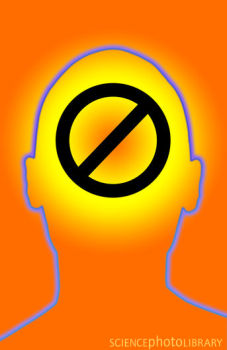
这是个噩梦般的场景:在心脏停搏被宣布死亡后,一个55岁的老人几分钟后就要进行器官捐赠,这时他开始表现出生命迹象。“在转移至操作室台面时,麻醉师发现他正在咳嗽,”亚特兰大艾莫利大学医学院的神经学家Adam Webb说。Adam Webb是最开始提出脑死亡概念的人。
有迹象表明那位老人还重新表现出睑闭反应并且正在呼吸——这都是正常脑干功能的信号。尽管老人最后还是去世了,但这个案例再次激起了讨论:是否需要更为明了的指导准则来确定脑死亡。
在被称为低温治疗的疗法中(webb的病人曾接受过这种治疗),要涉及到将身体温度降至33 °C,以减少由于心脏停搏后缺氧导致的对组织和细胞的伤害。
自从2003年《The New England Journal of Medicine》发表了两篇里程碑式的文章后,越来越多的医院采用低温治疗。这种技术挽救了生命,却在确定脑死亡这个问题上搅出了一池浑水。也使得更难以预测病人是否有可能从昏迷中醒过来。
心脏停搏在西方国家是死亡的主要原因,单在美国每年就影响到大约295000人。只有15%的人能够幸存,而在这其中80%的人会进入昏迷,其中约三分之一的人能恢复意识,但是大脑可能会受到损伤。
医生们使用大量的标准指标来帮助他们对昏迷病人进行预后。这些指标包括评估脑干反应能力的方法——例如眼球是否对光有反应, 以及电生理学标记,诸如对腕关节实施电刺激并观察大脑反应。医生们还对血液中一种叫做神经特异性烯醇(NSE)的蛋白质水平进行测定,这种蛋白质是由濒死的神经元细胞释放的。
但是,“越来越多的证据显示,那些被认为非常可靠的方法对于经历低温的病人可能并不同样可靠”,帕洛阿尔托的斯坦福中风中心的Christine Wijman说。
例如,在一项针对45为进行低温治疗病人的研究中,两位病人的眼球反应显示他们不太可能醒过来了,最后却恢复了意识。11位最开始只有微弱运动反应的病人也醒了过来。在另外一项不同的研究中,44位NSE水平超过33μg/l的病人中有4个恢复了意识,而这种NSE水平通常是预测病人不会再醒过来的临界值。
给大脑降温可以抑制神经元的活动,也可能延缓神经元的损坏或恢复。“神经元可能是暂停了,但它们并没有死亡,”耶鲁大学医学院的David Greer说。“药物也可以停留更长时间,一旦病人重获正常体温,这些药物可以变得更有作用。”
这些问题也可能使得更难以确定脑死亡。尽管美国的指导手册说医生在确定一例脑死亡之前应该排除那些令人迷惑的因素,Webb说还需要将指导手册制定的更为详尽。“仅靠临床标准可能并不适用于确定心脏停搏后的脑死亡,尤其在实施低温治疗时。”
自从Webb在6月份发表了他的案例报告后,各种信件蜂拥而至,有来自与Webb对当前指导手册持相同观点的神经学家,也有认为他误解了自己的人。
“如果这些作者一丝不苟地执行美国神经病学科学院的指导手册,他们是不会误诊这个病人的,”Greer说。“如果有任何能影响检查的因素,你也不会责怪谁。”
瑞士洛桑大学的Andrea Rossetti对此并无把握。“这是现实的 世界。你有操作指南,但是你也有正在实施指南的人。重要的是,将这类案例引入公众讨论,有助警醒其他人。”
抛开脑死亡不谈,大多数人同意医生需要新的规范来帮助他们对低温治疗后的病人的属性进行预后。“神经科医师急需新的指导手册,” Rossetti说。“这是关乎生死的事情。如果你太快对刚刚升高体温的人进行检查,你可能得不到反应并且以为他们醒不过来了,而他们其实还有机会。”(生物探索 william)
相关英文论文摘要:
Reversible brain death after cardiopulmonary arrest and induced hypothermia
Objective: To describe a patient with transient reversal of findings of brain death after cardiopulmonary arrest and attempted therapeutic hypothermia.
Design: Case report.
Setting: Intensive care unit of an academic tertiary care hospital.
Patient: A 55-yr-old man presented with cardiac arrest preceded by respiratory arrest. Cardiopulmonary resuscitation was performed, spontaneous perfusion restored, and therapeutic hypothermia was attempted for neural protection. After rewarming to 36.5°C, neurologic examination showed no eye opening or response to pain, spontaneous myoclonic movements, sluggishly reactive pupils, absent corneal reflexes, and intact gag and spontaneous respirations. Over 24 hrs, remaining cranial nerve function was lost. The neurologic examination was consistent with brain death. Apnea test and repeat clinical examination after a duration of 6 hrs confirmed brain death. Death was pronounced and the family consented to organ donation. Twenty-four hrs after brain death pronouncement, on arrival to the operating room for organ procurement, the patient was found to have regained corneal reflexes, cough reflex, and spontaneous respirations. The care team faced the challenge of offering an adequate explanation to the patient's family and other healthcare professionals involved.
Interventions: Induced hypothermia and brain death determination.
Measurements and Main Results: This represents the first published report in an adult patient of reversal of a diagnosis of brain death made in full adherence to American Academy of Neurology guidelines. Although the reversal was transient and did not impact the patient's prognosis, it impacted his eligibility for organ donation and cast doubt about the ability to determine irreversibility of brain death findings in patients treated with hypothermia after cardiac arrest.
Conclusions: We strongly recommend caution in the determination of brain death after cardiac arrest when induced hypothermia is used. Confirmatory testing should be considered and a minimum observation period after rewarming before brain death testing ensues should be established.







